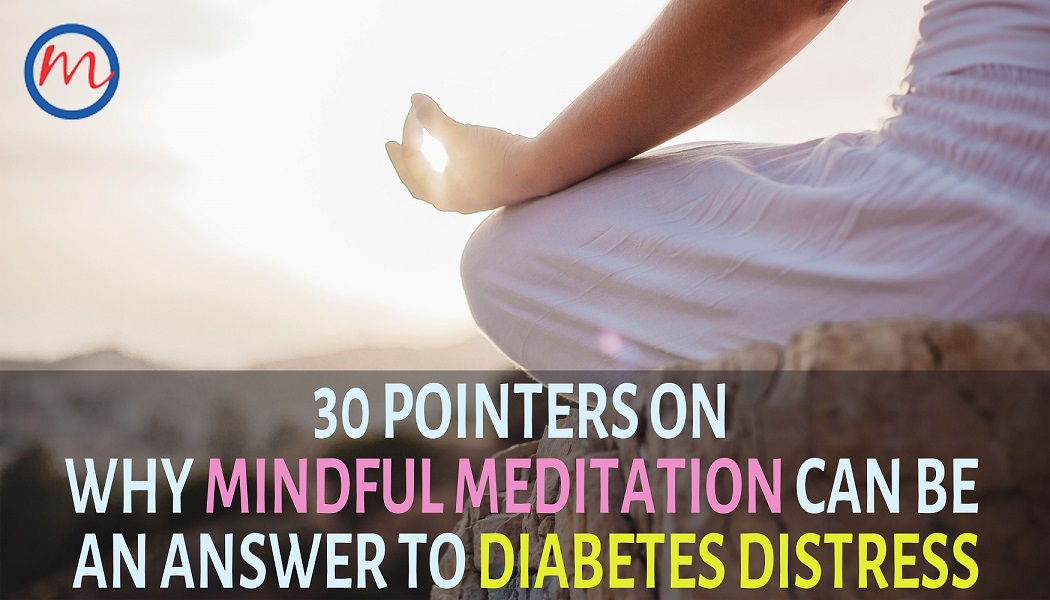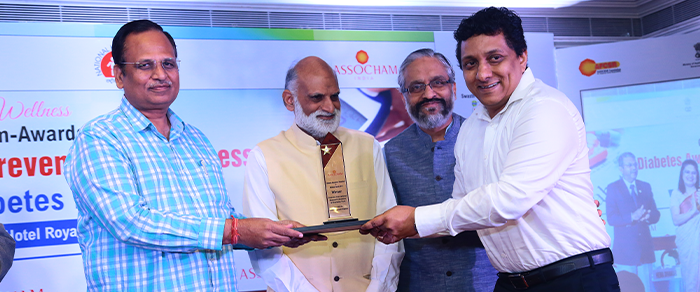As the year comes to an end, here is a chance to sharpen your New Year Resolutions by focusing on wellness. The point of concern is a new term that entered the scientific lexicon about a decade ago: Diabetes distress. It refers to the negative emotional experiences of living with a life-changing illness like diabetes: the demands and challenges, the stress, the guilt, the denial and the burden of self-management. A burgeoning body of evidence now links diabetes distress to worse health outcomes.
There are multiple treatment options available today for diabetes distress, from drug regimens to cognitive behavioural therapies. A growing body of research points to the practice of meditation as an adjunct to medical therapies, not just diabetes but also a range of chronic disorders: depression, anxiety, obesity, hypertension, heart disease, fibromyalgia, hypertension, psoriasis to cancer.
Mindful meditation is a fruitful area for research. Rooted in Buddhist thoughts, the 5,000-year-old practice of inner experience, correlates with reduction in stress, negative emotions and improvements in patient attitude in clinical setting. This post explores 30 different things on diabetes distress and mindful meditation that have come to light in recent years:
- New research shows that major depressive disorders (MDD) maybe three times more common in people with diabetes than in the general population. It affects every aspect of life and is potentially life-threatening.
- The new descriptive term, diabetes distress, is not an MDD, but a diabetes-specific mental state that causes emotional reactions to the diagnosis, threat of complications, relentless demands of self-management, unsupportive social structures (e.g. stigma, discrimination, or dealing with other people’s negative reactions or lack of understanding) and the financial implications (e.g. insurance and treatment costs) of the condition.
- It’s an under-treated but common disorder: 1 in 4 people with Type 1 and 1 in 5 people with Type 2 diabetes show high levels of diabetes distress, reveals evidence from 50 studies across the world.
- Some common signs of diabetes distress are: unstable blood glucose levels; HbA1c blood glucose levels are not within the target; not attending clinic appointments; skipping medication doses or not monitoring blood glucose enough; going into an unhealthy eating pattern to deal with stress; chronic stress (e.g. financial problems); impaired relationships with health professionals, family or friends; passive-aggressive during consultations; unsustainable social activities and quality of life
- Managing diabetes is not easy. a 24/7 activity. There is a continual need to make decisions, take actions, with often unexpected and unsatisfactory outcomes. Doing everything ‘as recommended’ is no guarantee of stable blood glucose levels – doing exactly the same things today as the day before can result in very different outcomes. The accumulation of these problems and frustrations may lead to ‘diabetes burnout’ and disengagement from diabetes care.
- Up to 45% of people in community settings with type 2 diabetes may suffer from diabetes distress. Untreated, it can lead to poor lifestyle modification, glycaemic control and self-management behaviours.
- Modern medicine has ignored social, psychological and emotional dimensions of health for a long. In the 21st century, there is increasing recognition that a patient’s perception does not follow this clear divide between the mind and the body.
- In this context, meditation has emerged as a popular and useful supportive strategy in chronic disorders. Recent studies have shown meditation activates parasympathetic nervous system (slows down heart rate, breathing rate, blood pressure, sweating) and soothes the sympathetic nervous system (affected by anxiety, tension, fatigue and depression)
- Psychologists and social scientists have given some thought to the question: what is meditation? They believe the key components of meditation to be focused attention, self-regulation of emotions, self-awareness.
- Apart from the above, the practice of meditation is associated with greater voluntary control of the mind and emotions, cultivation of calmness, serenity, concentration, joy and love, reduction of anxiety, depression, anger, fear or hatred.
- In general, clinical evidence shows, meditation affects multiple regions of the brain. Several studies report both functional and structural changes in brain (or neuroplasticity).
- The concept of neuroplasticity, at the cutting-edge of brain science, is the ability of the human brain to reorganise and re-engineer itself, both physically and functionally, throughout one’s life, in response to environment, behaviour, thinking, and emotions.
- Some of the scientific evidence on meditation-related neuroplasticity involves: attention regulation and cognitive processing, reduced emotional reaction and faster return to positive mood, positive representation of the self, increased awareness of the present moment, stress reduction and generally increased brain activity.
- Mindfulness is the psychological process of bringing one’s attention to the present moment, non-judgementally. A gentle practice, breathing is at its core.
- Mindfulness meditation has been incorporated into psychology and psychiatry practices for several chronic disorders. Benefits have been demonstrated in depression, anxiety, eating disorders, sleep disorders, fibromyalgia, chronic pain syndrome, rheumatoid arthritis, cancer, HIV/AIDS, diabetes, hypertension, cardiovascular diseases and substance abuse.
- Mindful meditation can also be an important group intervention in patients with diabetes, to reduce distress, improve mood and develop positive coping skills.
- In the earliest study exploring the effects of mindfulness-based strategies on diabetes in 2007 (Rosenzweig et al), significant improvement in depression, anxiety and general psychological distress was noticed after one month.
- Kopf and Hartmann et al. (HEIDIS trial on people withT2D and early diabetic kidney disease) noted in 2014:significant reduction in albumin-creatinine ratio (a marker of kidney disease), stress levels and depression score; a trend towards reduction of diastolic blood pressure. The beneficial effects were not sustained at 3-year follow-up.
- In a pilot study on 40 adults with diabetes and heart disease, a 6-week meditation and mindfulness intervention programme was associated with reduction in pathological worry and thought suppression, improved sleep, greater relaxation, better acceptance of illness and illness experience (Keyworth et al., 2014)
- In a Buddhism-based walking meditation exercise with T2D patients, significant reduction was seen in fasting blood glucose, HbA1c, systolic and diastolic blood pressure and blood cortisol levels (Gainey et al., 2016
- Mindfulness-based stress reduction was associated with significant improvements in diabetes distress, weight, glycaemic control, blood pressure control and reduced heart rate.
- To summarise, mindfulness interventions have demonstrated impact on a broad range of outcomes relating to all domains of holistic care in diabetes: biological, psychological and also social.
- How much mindfulness intervention is necessary to experience benefits? Even three to four brief sessions of 5–10 minutes of guided meditation have been shown to reduce negative affect, but most studies have been conducted over 4–8-week programmes.
- Most studies are, however, limited by small sample size. Therefore, these studies carry a high risk of bias.
- It can also be argued that several trials of physical activity and lifestyle intervention are themselves associated with significant improvements in metabolic parameters and overall well-being.
- Some studies have evaluated the unwanted effects of meditation. These are emotional pain, self-criticism, fear, anxiety, lack of motivation, boredom, disorientation, insomnia, feeling of alienation etc. Hence, caution is needed when initiating people with psychosis, seizures, post-traumatic stress or severe depression into mindfulness.
- Most clinical studies, however, involved low-intensity meditation practices, to make sure they were not psychologically challenging.
- Meditation in modern medicine is being used by a large number of diabetic patients in many countries of southeast Asia as complementary strategies. National guidelines for management of diabetes in India recommend yoga as a complementary therapy, but not meditation.
- The World Health Organization focuses on “mind-body medicine” as Complementary and Alternative Medicine: meditation, prayer, mental healing, yoga, tai chi, art therapy, music therapy and dance therapy.
- The American Heart Association recommends meditation as adjunct to lifestyle modification and conventional therapy for hypertension and heart disease.




